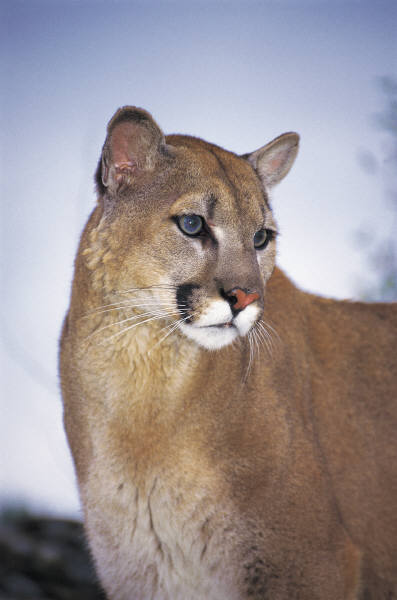

The Department is committed to helping people learn how to behave responsibly and coexist safely in mountain lion habitat. While human encounters in Arizona are rare, conflicts can occur when people recreate in mountain lion habitat or when a mountain lion frequently uses human dominated-landscapes. Although documented in and around lands and communities adjacent to and surrounded by wild lands, mountain lions tend to avoid human dominated-landscapes and interactions with humans, which results in relatively few reported mountain lion sightings. In Arizona, mountain lions are known to kill and consume domestic livestock which often creates conflicts with livestock operators.ĭespite having the broadest geographic distribution of any terrestrial mammal in the Western Hemisphere, their elusive, solitary, and primarily nocturnal nature makes it rare to observe them in the wild, making it difficult for managers to survey and monitor. They also feed on smaller animals when necessary, such as javelina, turkey, coyotes, bobcats, skunks, rodents, and even insects. Typically they prey on deer, but will consume other large mammals as well, such as bighorn sheep, elk, and pronghorn. Uneaten portions of a kill are cached (hidden or covered with leaves, dirt, or other debris). Mountain lions are stalk and ambush predators that hunt primarily at night and rely on ambush to kill their prey. Males and females are highly territorial and often kill other mountain lions found in their territory. Mountain lions are solitary animals with the exception of females with kittens or breeding pairs. Juvenile males tend to disperse much longer distances than juvenile females. Young remain with the mother for about 11-18 months, learning the skills necessary to survive independently. Litter sizes of 2-4 are common and females may raise kittens in consecutive years, but around 1½ years between litters is more common. Females typically first breed around 2.5 to 3 years of age while males first breed around their second year. Mountain lions may breed at any time of the year with kittens born in any month however, in North America the majority of births occur from May through October. Jaguars are larger and heavily spotted with rosette patterns.

Bobcats have a short, “bobbed” tail and pointed ears with tufts while ocelots have heavily spotted pelts and long, ringed tails. Bobcats and ocelots are much smaller than mountain lions. Mountain lions are easily distinguished from Arizona’s other wild cats-the bobcat, ocelot, and jaguar. Adult females may grow up to 7 feet long, including the tail, and weigh an average of 90 pounds.

Adult males may be more than 8 feet long, including the tail, and can weigh 150 pounds or more.

Males and females vary in size and weight, with males being about 1/3 larger than females. Mountain lions have very long tails which can be more than a third of the total length of the animal. Adult mountain lions are tan to light cinnamon in color with a white underbelly and have black on the back of their ears and the tip of their tail. The scientific name given to mountain lions is Puma concolor, meaning “cat of one color.” Mountain lions are also called cougars, pumas, or panthers.


 0 kommentar(er)
0 kommentar(er)
